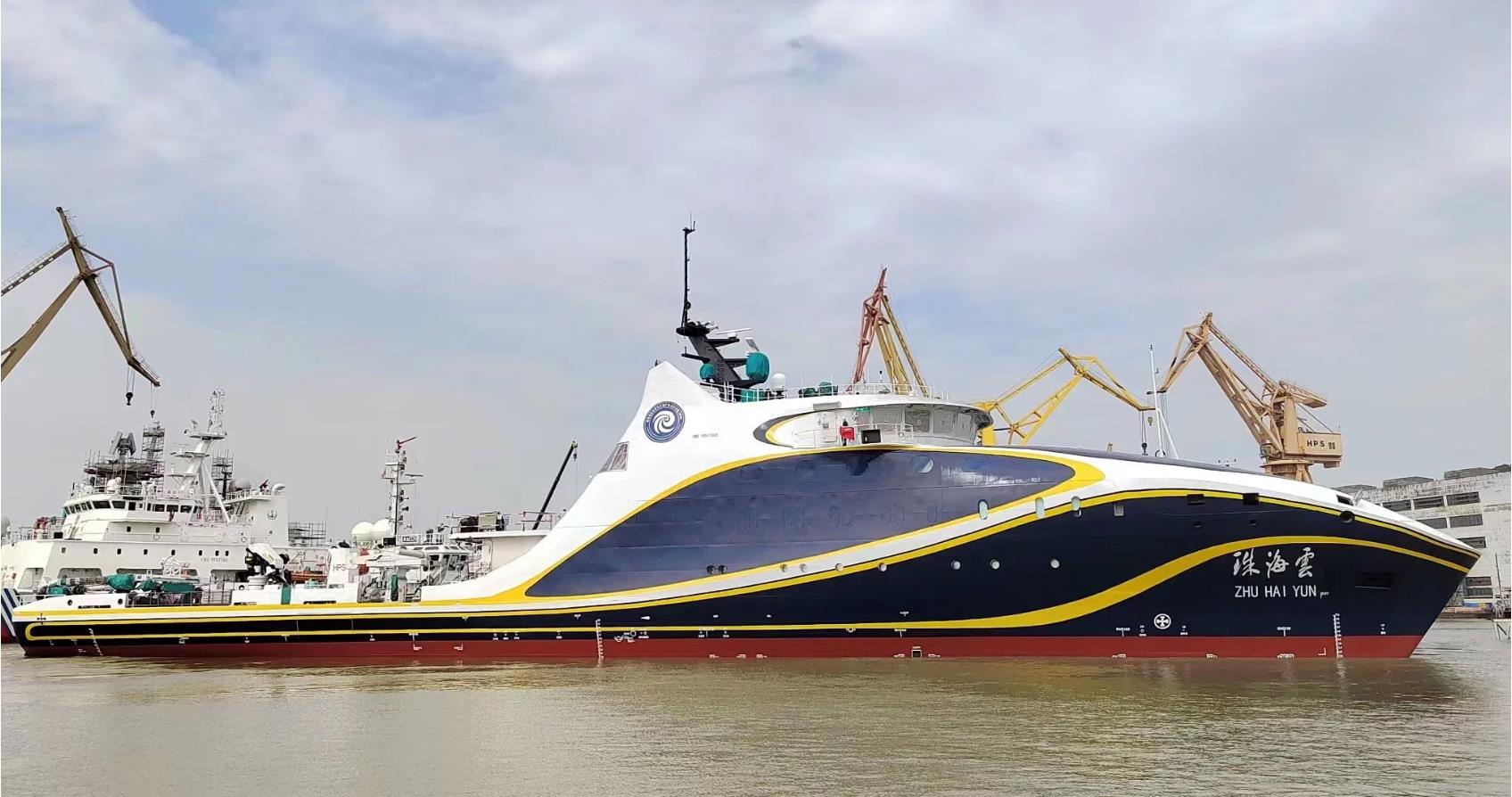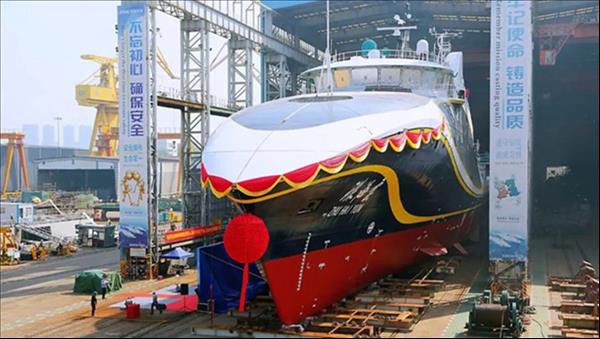
China Floats First-Ever AI-Powered Drone Mothership
China has launched the world's first artificial intelligence-operated drone carrier, an unmanned maritime mothership that can be used for maritime research, intelligence-gathering and even potentially repelling enemy drone swarms.
The autonomous ship, known as Zhu Hai Yun, was launched on May 18 in Guangzhou and travels at a top speed of 18 knots. Most of the 88.5-meter-long ship is an open deck for storing, launching and recovering flying drones.
It is also equipped with launch and recovery equipment for aquatic drones. Moreover, the ship's drones are reportedly capable of forming a network with which to observe targets. Its AI operating system allows it to carry 50 flying, surface and submersible drones that can launch and recover autonomously.
Construction on the ship began in July 2021, with all its core components such as power, propulsion, survey operation support systems and custom AI system independently researched and developed in China. The ship is expected to finish its sea trials and be delivered by the end of the year.
The ship is not designed to navigate busy seaports autonomously but instead will run on remote control until it reaches open water. At that point, its autonomous systems will take control and execute whatever mission it is programmed to do.
According to the Chinese state-run Science and Technology Daily, the ship will be deployed to carry out marine scientific research and observation and serve various roles in marine disaster prevention and mitigation, environmental monitoring and offshore wind farm maintenance.
Dake Chen, director of the Southern Marine Science and Engineering Guangdong Laboratory that owns the ship, told media that“the vessel is not only an unprecedented precision tool at the frontier of marine science, but also a platform for marine disaster prevention and mitigation, seabed precision mapping, marine environment monitoring, and maritime search and rescue.”
The Huangpu Wenchong Shipyard that built the ship stated that it will be equipped with various additional observation instruments“which can be deployed in batches in the target sea area and carry out task-oriented adaptive networking to achieve three-dimensional view of specific targets.”

The Zhu Hai Yun gives China a new edge in drone warfare. Image: South China Morning Post / Handout
The ship also has potent military capabilities .
“The most immediate benefit to the PLA is the increase in knowledge about relevant waters through the collection of data by the UUVs [unmanned underwater vehicles]. This can help PLA Navy submarines operate with greater confidence and effectiveness in those areas,” said Timothy Heath, a senior security analyst from the US-based Rand think tank.
Heath said that the ship is vulnerable to jamming and that there is a risk its onboard AI could make poor decisions without human guidance.
Zhou Chenming, a researcher from the Yuan Wang military science and technology institute in Beijing, disagrees. He has stated that the ship can at most be deployed to relatively stable waters near the shore, where most warfare or conflict won't occur.
Zhou emphasized that the ship's greatest contribution would be to replace increasingly expensive labor costs in economic or commercial activities along China's near seas. Still, China is known to be testing unmanned drone motherships for combat applications.
Yunzhou Tech, China's first and most successful autonomous vessel company, is working on a drone ship carrying six smaller water drones to attack the surface of enemy ships. The six drones will reportedly work in a coordinated manner to surround the enemy ship and then proceed with offensive operations.
Yunzhou Tech is also working on swarming technology that aims to allow multiple drones to engage in“cooperative confrontation” with enemy vessels to“besiege and expel” them. The drones are intended to share sensor data, track target vessels at high speed, conduct intercepts,“expel” intruding vessels and are capable of autonomous decision-making as a group.
For years, the company has also been designing software for coordinating drone swarms for civilian purposes, with their“confrontation mode” under development.
Last year, China tested a catamaran drone carrier designed to launch and recover small swarms of aerial drones and unleash electronic attacks on enemy vessels.
The catamaran can also launch swarm attacks on targets ashore or air defenses, allowing for more traditional manned capabilities to be more effective. This concept might be scaled up using the design philosophy of the Zhu Hai Yun.

Artist's concept of a drone swarm. Credit: C4ISRNET
China's development of maritime drone swarming capabilities may be part of its efforts to defeat Taiwan's defensive“porcupine” strategy, which entails having many small assets that are highly survivable and lethal on the battlefield.
These drones may be equipped with laser mesh technology, which gives each individual drone the ability to communicate with all other drones in the swarm using laser-based datalinks – giving the swarm as many“eyes” as there are drones in it.
An attack by such a swarm may force Taiwan to prematurely activate its air defense and coastal missile battery radars and expend limited inventories of missile rounds and artillery ammunition.
That, in turn, would reveal the location of these defensive positions and significantly reduce their available firepower, making them vulnerable to subsequent attack by suicide drones within the swarm, or higher-end manned assets like China's J-20 stealth fighters or H-20 stealth bombers.

Legal Disclaimer:
MENAFN provides the
information “as is” without warranty of any kind. We do not accept
any responsibility or liability for the accuracy, content, images,
videos, licenses, completeness, legality, or reliability of the information
contained in this article. If you have any complaints or copyright
issues related to this article, kindly contact the provider above.

















Comments
No comment